The walls are full-height glass screens, subdivided into huge rectangles that soar to meet the exposed ceiling beams, and the furniture and fittings are of light oak. Outside, courtyards with stone circles at the centre and pebbles underfoot are dotted with benches, birdhouses and bee-friendly lavender. Trees grow within the gardens and beyond the boundary, creating tranquillity in the middle of a busy residential area.
This is the church of Our Lady of Mount Carmel, in Firhouse, designed by Shane de Blacam and John Meagher in an architectural competition in 1974 for new suburban churches in the Dublin Archdiocese, and opened in 1979. It could be read as an early template for Meagher’s remodelling, in 2009, of his home on Carlisle Avenue in Donnybrook, one of 18 houses on a square tucked away off Morehampton Road.
It is unusual for a business website to have a home on its home page, but in the case of de Blacam and Meagher, the glass-framed, lime-washed, light-washed livingroom/studio epitomises the practice’s “palette of warm, textured, complimenting materials, each sympathetic to the surrounding environment ... with extensive expression of timber, stone and brick”. This description of its mixed-use building at Harold’s Cross Bridge hallmarks the conservation, commercial and residential projects of the 45-year partnership. An obituary in this newspaper for Meagher, who died in March 2021, includes de Blacam’s praise of his friend’s “special genius for the design of houses and his own house ... is a master work of domestic architecture”.
Sheltered by lace-leaved trees and backing on to the Royal Hospital in Donnybrook, the white-rendered mid-terrace Victorian exterior of number 3 Carlisle Avenue gives way to an extraordinary interior that is restrained in its simplicity and breathtaking in its execution. Inside the burgundy door, to the right of the hall, the full-height glass wall, subdivided by a heavy-duty W20 steel structure, lights the front livingroom. Here is a white marble fireplace, but there the similarity with most other front rooms ends; the ceiling light is placed off-centre, and a glass display case is incorporated into the dividing wall. This means the adjacent room, down three steps — a cosy book-lined study with a stove — is no dim internal room but draws light even from the fanlight at the front.
READ MORE
Beyond this is the living/diningroom/studio, with a long lightwell, a high-up plate rack and a lemon tree bringing a sense of Meagher’s beloved Ibiza to his home. This love of nature imbued his life and work; the huge clam shell on a display table in the front room echoes the one he sourced in a London curio shop and is still used as a baptismal font in the Firhouse church.
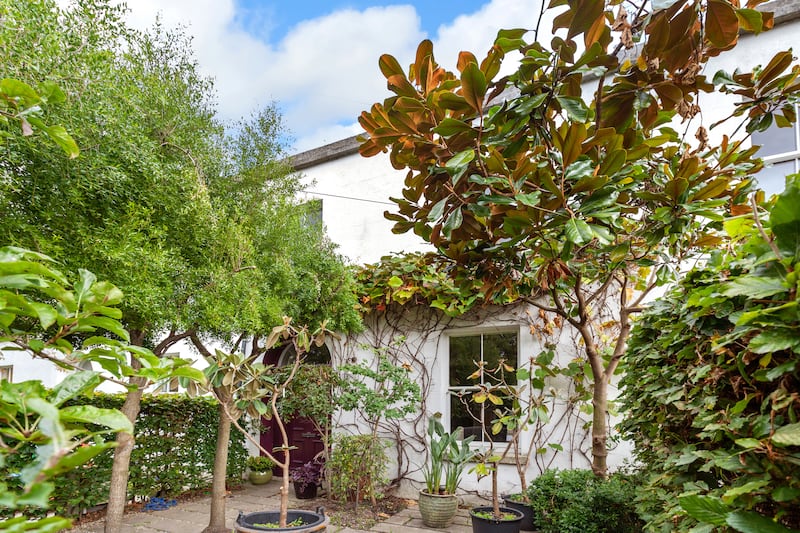
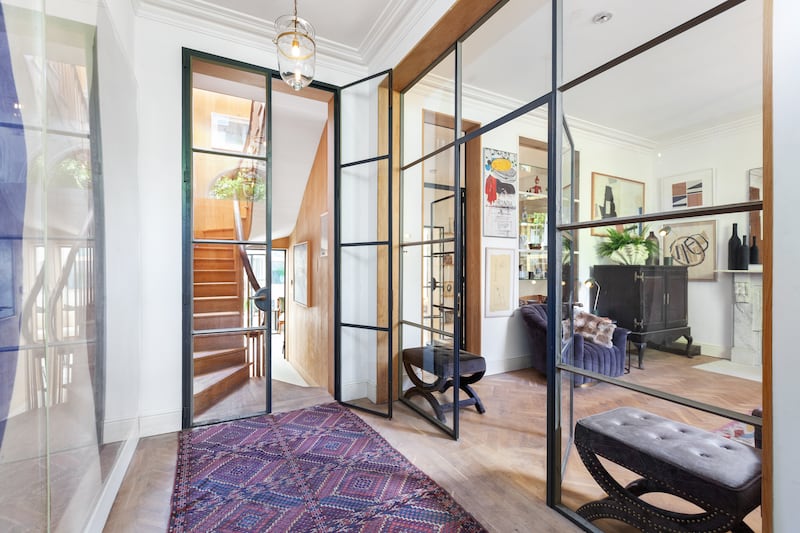
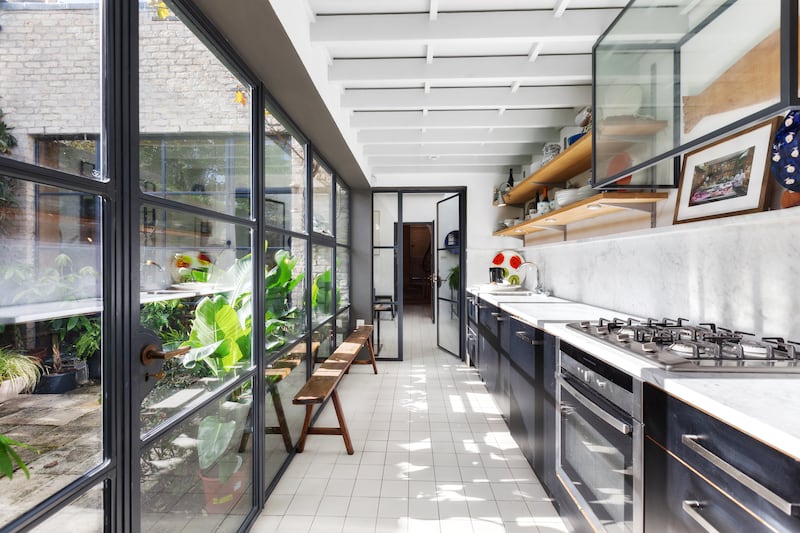
At the rear, the modern return — built with the bricks from the original one — extends the length of the plot. The galley kitchen, with near-black-painted plywood units, white-painted ceiling beams, a marble worktop and a glass cooker hood, leads through a store and on to a bathroom tiled in dark green mosaic and designed to feel like a jewel box. At this level the flooring has changed from warm oak parquet to cool white tiles, and once you notice one set of squares — in these tiles, in the pattern of the mirrors, in the mosaics and the paving stones — you see them everywhere, so the house seems to embody the golden mean.

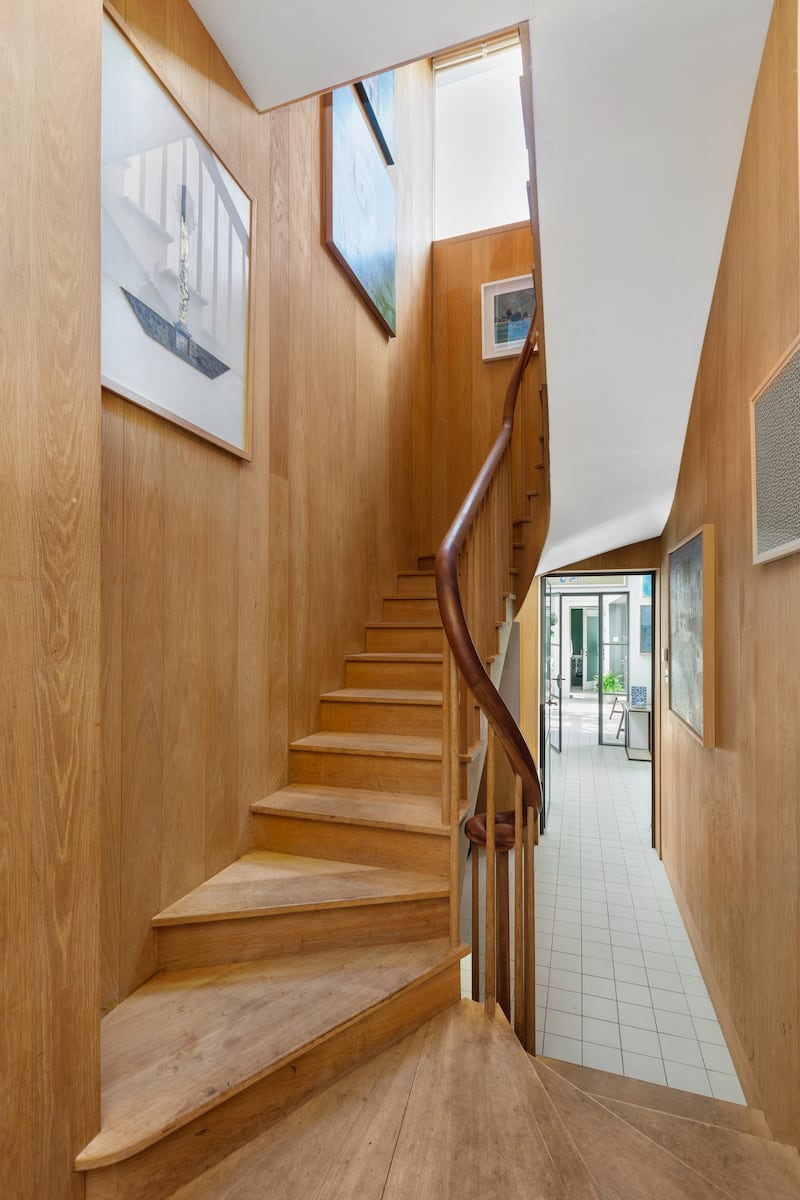
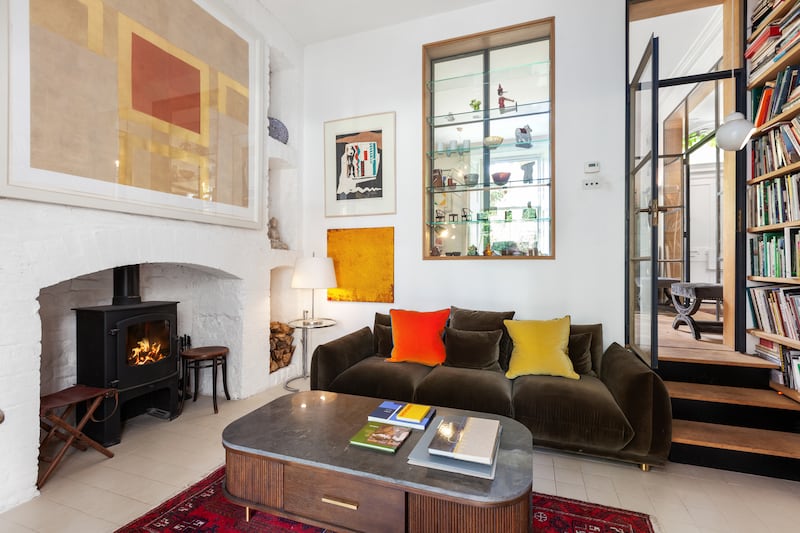
In the lush Mediterranean-style courtyard with vines, bamboos and beeches, it takes a moment to realise that the glass in the boundary wall is not a mirror reflecting this garden, but rather another steel-squared window glimpsing a quiet part of the Royal Hospital garden.
In its citation for the firm’s 2021 award of the Gandon Medal for Lifetime Achievement, the Royal Institute of Architects in Ireland describes de Blacam and Meagher’s buildings as rising “above pure utility, beyond basic construction, to encompass all that is practical and necessary ... with architecture that is culturally meaningful, memorable, and beautiful”. This rings true on the first floor of the house, for as you climb the bespoke oak and mahogany stairs you sense surprise on the turn. And when you turn, you see the meadowy roof of the extension; on the landing, there’s a kind of glass portal to the accommodation.
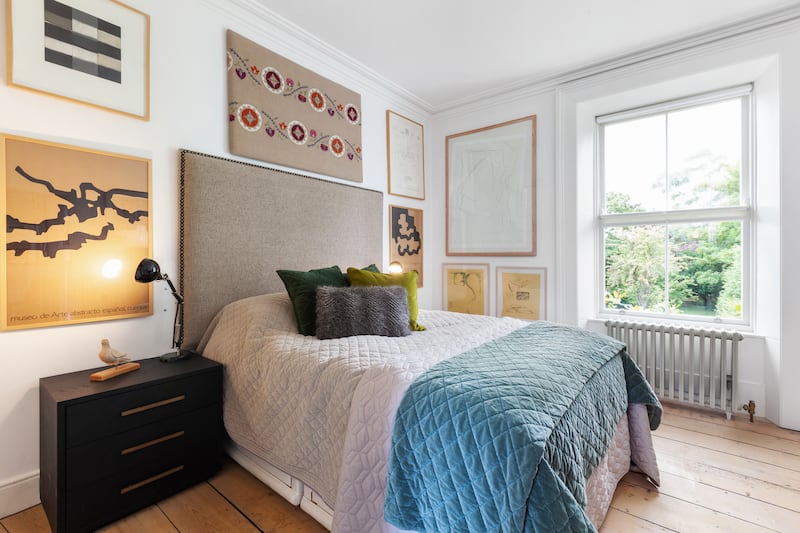
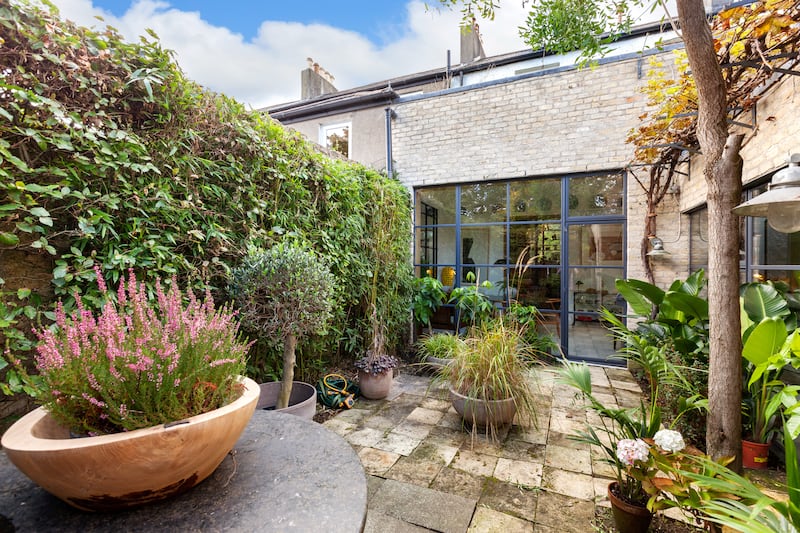
Reordered from a three-bedroom house, there are two interconnecting rooms on the left; to the rear a study or bedroom with exquisite salvaged glass wardrobe doors, and to the front a beautiful calm main bedroom. The bathroom, with square-tiled shower and a basin perched on a marble-topped table, opens from here and from the landing. The reclaimed floorboards are of differing widths, and all the windows give on to green views — over the grass roofs to the hospital grounds and across Meagher’s textured tree canopy to the front square. You close the door, appreciate the brass shell-shaped knocker that recalls a prehistoric gold neckpiece, and rejoin reality.
Number 3 Carlisle Avenue, Donnybrook, Dublin 4, which covers 130 sq m (1,400 sq ft) and is Ber-exempt, is for sale through Sherry FitzGerald with an asking price of €1.375 million.














